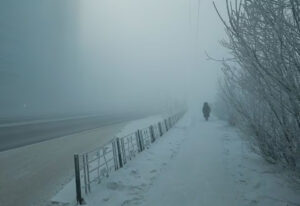What is ‘Vymorozka’ Called as “The Hardest Job in the World”?

In the depths of Siberia, a region known for its unforgiving climate and rugged terrain, exists a profession so challenging and perilous that it has been dubbed “the hardest job in the world.” This profession is known as “vymorozka.” The term, deeply rooted in Russian linguistic and cultural landscapes, translates roughly to “the act of freezing out.” However, the essence of vymorozka extends far beyond its literal translation, encompassing a job that is both a testament to human resilience and a poignant reminder of the extremes to which people will go to harness the natural world.
Also Read: Best Hotel Credit Cards to Choose From in 2024
Contents
The Nature of Vymorozka
Vymorozka is a traditional method used by Siberian hunters and fishermen during the coldest months of the year to preserve fish and meat without the use of modern refrigeration technologies. This preservation technique relies on the sub-zero temperatures that are a hallmark of Siberian winters, where the thermometer can plunge to -50 degrees Celsius (-58 degrees Fahrenheit) or lower. The process involves exposing freshly caught fish or slaughtered game to the open air, allowing the cold to penetrate the flesh and freeze it solid. This natural freezer locks in the freshness of the produce, allowing it to be stored for months on end without spoiling.
Why is Vymorozka Considered the Hardest Job?
The reason vymorozka is considered “the hardest job in the world” lies in the extreme conditions under which it is performed. Hunters and fishermen embarking on a vymorozka expedition must traverse vast, snow-covered landscapes, often on foot or by reindeer, braving blizzards, ice storms, and the constant threat of frostbite and hypothermia. They must also contend with the ever-present danger of predatory wildlife, including bears and wolves, which are drawn to the scent of fresh kill.
The work does not end with the catch; it then requires precise timing and knowledge of the environment to ensure the fish or meat is frozen at the optimal moment, balancing between too soon (which can leave the center unfrozen and susceptible to spoilage) and too late (where decomposition might begin). This knowledge, passed down through generations, is a blend of art and science, embodying the deep connection between the Siberian people and their land.
Cultural Significance
Beyond its physical demands, vymorozka holds deep cultural significance. It is a practice that has sustained communities through harsh winters for centuries, a vital link to the past that continues in the present. This method of food preservation is not merely about survival; it’s a celebration of resilience, self-reliance, and harmony with nature. The skills and knowledge required for vymorozka are highly respected, embodying the spirit and tenacity of the Siberian people.
Modern Implications
In the age of global warming and technological advancement, the traditional practice of vymorozka faces threats from changing climates and modernizing societies. Yet, it remains a critical aspect of life in remote Siberian regions, where modern refrigeration may not be feasible or desired. Moreover, it stands as a symbol of sustainability, utilizing natural resources without reliance on electricity or fossil fuels.
Conclusion
Vymorozka is more than just a method of food preservation; it’s a testament to human endurance and ingenuity in the face of nature’s extremes. Called “the hardest job in the world,” it challenges those who undertake it physically, mentally, and emotionally, yet offers rewards that transcend the mere sustenance of body. It nourishes the soul, connects communities to their heritage, and teaches lessons of respect for the natural world. In a world increasingly disconnected from nature, the enduring practice of vymorozka reminds us of the value of tradition and the power of human resilience.





